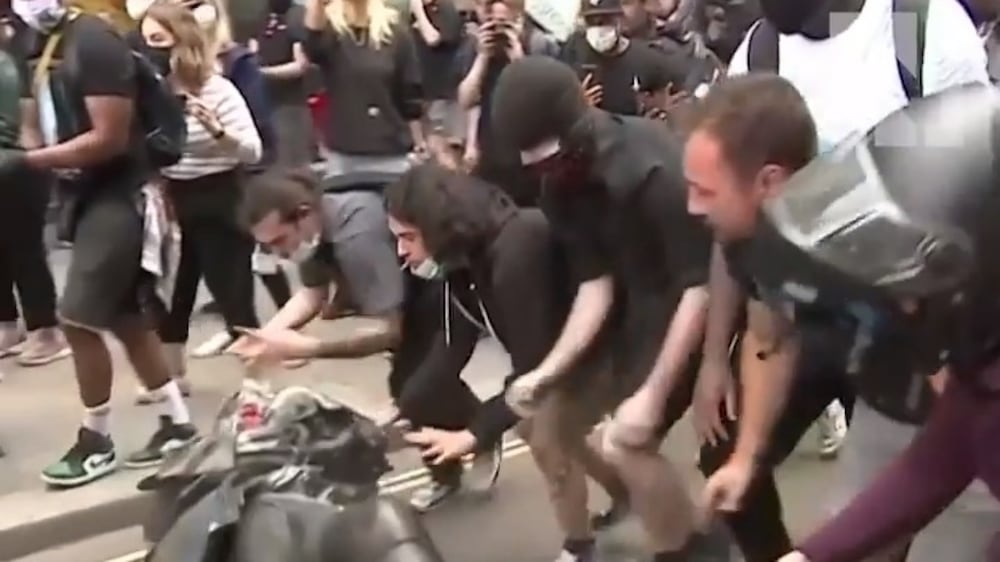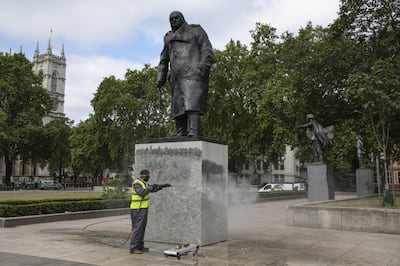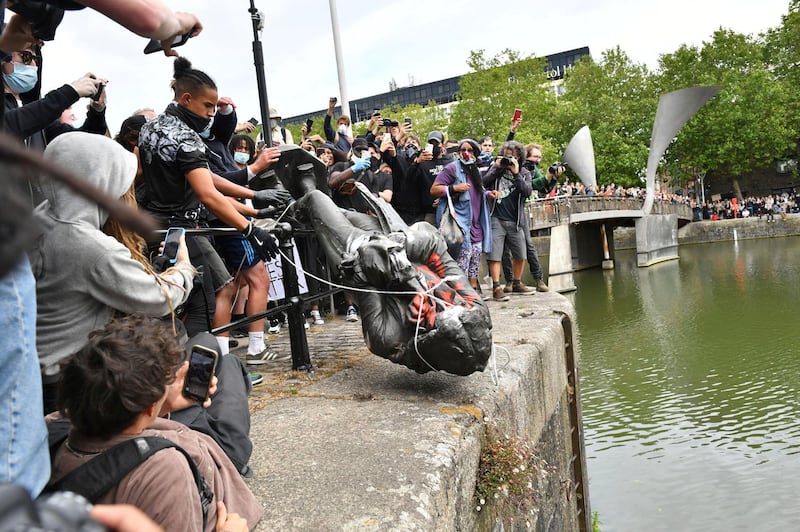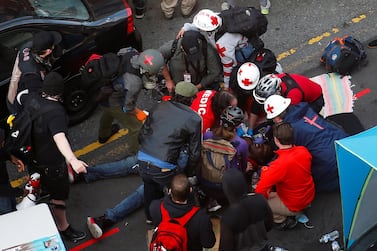For more than 100 years the statue of 17th century slave trader Edward Colston looked out over Bristol city centre.
Now his Victorian memorial lies at the bottom of the city’s harbour, torn down in anti-racism protests that have swept across the Atlantic from the US.
The poignancy of Sunday’s destruction in Bristol was not lost on the demonstrators who broke UK coronavirus lockdown rules to show support for protesters in America appalled by the death of African-American George Floyd, 46.
The relations between the past and the present in the city, where Colston grew rich through transatlantic slave trade, has sparked debate in the UK over structural racism closer to home.
Nowhere has the debate been fiercer than in Bristol, where the statue was the subject of heated disagreement for decades before the death of Floyd in police custody in Minneapolis, Minnesota.
After the protests, Bristol Mayor Marvin Rees said he knew the removal of the statue would be divisive but he backed the demonstrators.
Some of the protesters said it was a Saddam Hussein moment, echoing the ecstasy that drove a Baghdad crowd to pull down the dictator's statue in 2003 after US-led troops seized the city.
Protesters throw statue of slave trader into Bristol river

"I know the removal of the Colston statue will divide opinion, as the statue itself has done for many years," Mr Rees said.
"However, it’s important to listen to those who found the statue to represent an affront to humanity.
"Let's make the legacy of today about the future of our city, tackling racism and inequality.
"I call on everyone to challenge racism and inequality in every corner of our city and wherever we see it."
Despite agreement in the current climate that the statue should have been taken down years ago, senior British politicians said the statue’s removal should have been through normal, democratic means.
“I grew up in Bristol. I detest how Edward Colston profited from the slave trade. But this is not OK,” former chancellor Sajid Javid wrote on Twitter during the protests.
“If Bristolians want to remove a monument it should be done democratically, not by criminal damage."
But many, including former Bristol mayor George Ferguson, have said democracy had not worked in taking down the statue.
Mr Ferguson said he regretted not removing the memorial even though it would have been “flying in the face of majority Bristol opinion”.

Mr Rees has tried to build momentum from the destruction of the Colston statue.
The slave trader's presence remains spread about the city in the names of buildings, schools and even in a stained-glass window in Bristol’s cathedral.
As the Black Lives Matter movement gives new urgency to discussions about historical monuments in Europe, Colston’s legacy may be the thin end of the wedge.
On Monday renewed calls were made for the removal of a statue of British colonialist Cecil Rhodes from Oriel College, Oxford.
The Rhodes Must Fall movement was established in 2015 at Cape Town University, and later spread to Oxford, where students demanded that the statue be removed.
In 2016 Oriel College decided to keep the statue despite widespread student demands to remove it.
Campaigners from the Rhodes Must Fall group said that the row illustrated Britain's "imperial blind spot".
The Colston statue was not the only monument attacked during Sunday’s protests.
A statue of former British prime minister Robert Peel, the Conservative politician described as the founder of modern policing, was vandalised in Glasgow.
But it was graffiti on a statue in Whitehall in London that called wartime prime minister Winston Churchill a racist, which provoked the greatest backlash.
Protesters also climbed on the cenotaph, the national memorial to Britain’s war dead, and appeared to try to set fire to its flags.
Nigel Farage, one of the principal architects of Britain’s exit from the EU, has warned that violence could follow if monuments were not properly protected.
“If Boris Johnson won't lead and stand up for the country, as its symbols are trashed, then people will start taking it into their own hands," Mr Farage told LBC radio.
"Full-on race riots are now possible. Show leadership and fast."







